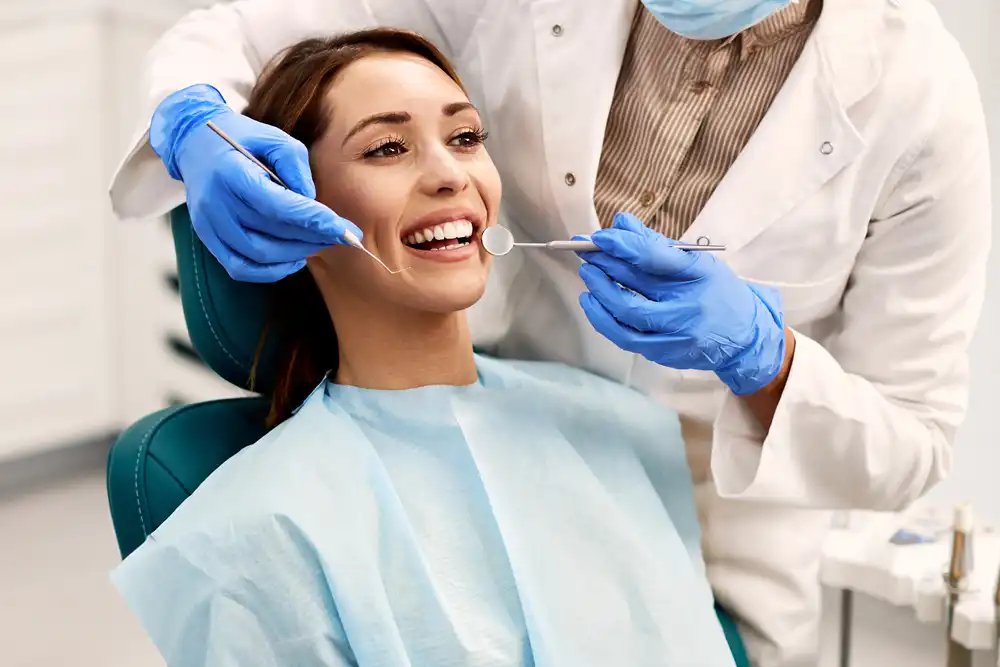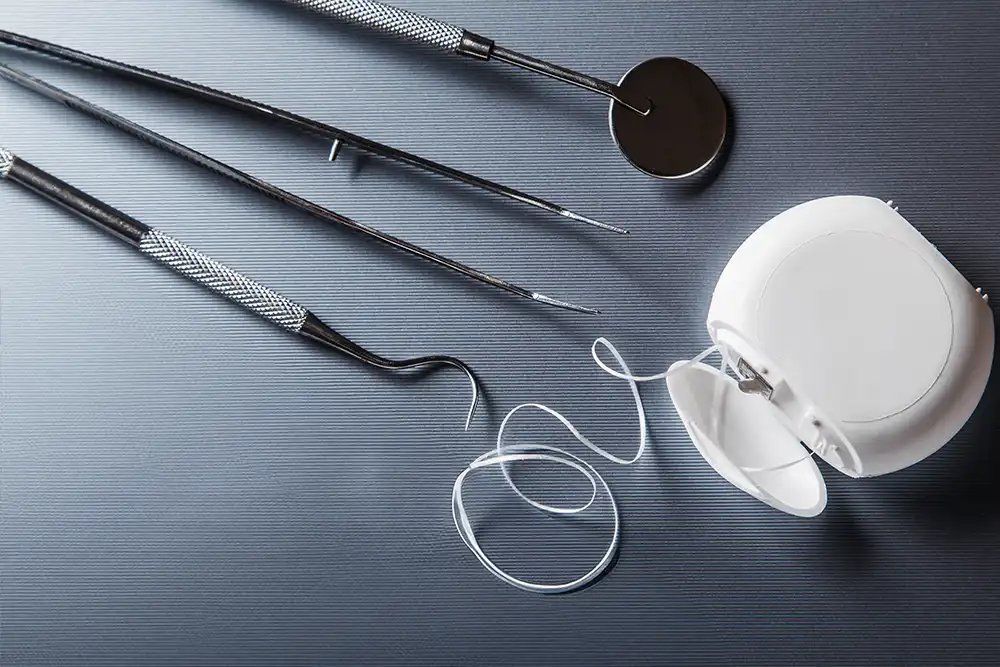Routine teeth cleaning appointments are vital to good oral health. Although, it is common for patients to believe that they can skip these appointments if they have great dental home care. However, teeth cleanings are necessary to best care for your teeth, but this does not mean your home oral care is lacking. Dental hygienists are professionally trained to remove plaque and tartar, improve the health of your gums, and monitor them for any changes. They can provide a deeper and more thorough level of teeth cleaning that is not achievable at home due to the special instruments and techniques that they use.
Plaque and calculus naturally build up on your teeth over time, even though you may regularly brush and floss. This is also thanks to the many strains of bacteria we have in our mouths. This affects your gum health and your overall oral health.
Dental health problems can be treated more easily when they are caught early. At your cleaning appointment, your dentist will also do a quick checkup of your oral health and examine your mouth to check for issues such as cavities, indicators of oral cancer, or gum disease.
Goals and results of regular professional teeth cleaning are:
- Promoting and maintaining the best possible oral health
- Removing plaque and calculus buildup on your teeth
- Diagnosing and preventing cavities
- Treating and preventing Periodontal diseases
- Removing surface stains
Our office follows the guidelines from the American Dental Association, which recommends having a professional teeth cleaning done once every 6 months. Some patients may require teeth cleanings more often, depending on the severity of gum disease. Gum disease includes Gingivitis and Periodontitis.
Teeth Cleaning Breakdown
Before the actual cleaning starts, your appointment will begin with the dental hygienist reviewing your medical history including any medications or supplements you may be taking. It is important that you tell your dental professionals about your medical history even if you do not believe they are related. Many diseases and medications can have oral implications or side effects.
After this is complete, the hygienist will start cleaning your teeth. There are different techniques and types of cleanings, depending on the condition of your teeth and gums.
Tooth Scaling
The hygienist uses a hand instrument called a “scaler” to remove any plaque and calculus that naturally accumulate along and just below your gum line and between your teeth. They will also use a small mirror to check your teeth and gums for any problems or inflammation. The scalers create a scraping sound as they are used on your teeth.
Ultrasonic instruments use vibration and water and can also be used to gently loosen pieces of calculus. Debris will be sprayed away with the water as it is loosened and a small suction is used to clear it all out of your mouth.
Scaling & Root Planing
This type of cleaning is also called a deep cleaning, and is necessary when Periodontitis is present, which is a destructive inflammatory disease of the gums that causes deeper pockets and bone loss. The root of the tooth is the portion that is held in the bone and is not typically visible in our mouths. However, with Periodontitis, bone loss is present and often exposes these roots. Root planing is when the hygienist continues scaling deeper along the tooth’s root surface and removes calculus deposits and smooths out any rough areas. Once the gum tissue is gently pushed aside, the surface of the root is exposed. Then, the scaling instruments are used to clean the surface of the root. A smooth root surface will help prevent bacteria, plaque, and tartar from building up below the gum line.
Depending on the patient, planing is sometimes recommended to prevent infection, which often also requires the application of medicine to the root area. A follow-up visit is usually also scheduled after root planing. Remember, this teeth cleaning technique is only necessary when certain gum disease is present and is often not necessary if you are consistently maintaining good oral hygiene at home.
Source: ADA – Mouth Healthy
Tooth Polishing and Flossing
The hygienist will then polish your teeth. With the traditional prophy cup polishing, your hygienist will use a polishing hand tool with a soft rubber tip and a paste to smooth and shine the surface of your teeth. Alternatively, they may air polish your teeth, which involves using a jet of compressed air, water and fine powder to thoroughly remove stains.
Flossing and Brushing
After the scaling and your teeth are plaque and tartar-free, the dental hygienist will then floss your teeth. Even though you may be flossing regularly at home, the hygienist can get deep between your teeth and can also identify any potential trouble spots where your gums may be bleeding.
Routine teeth cleanings are something that should be included in your routine oral health care. A good cleaning does not simply give a better appearance, but has health benefits such as removing the biofilm, plaque, and calculus on your teeth. We believe it is important to have a dentist and dental hygienist that you trust and are comfortable with for your cleanings.
Our fun-loving team here at Harmony Dental has the training and experience to meet your dental needs. They are true patient advocates, help keep your mouth and teeth in the best possible condition, and will work to give you the confident smile that you deserve. We can bring balance and beauty to your dental health.
FAQ
View Other Services


